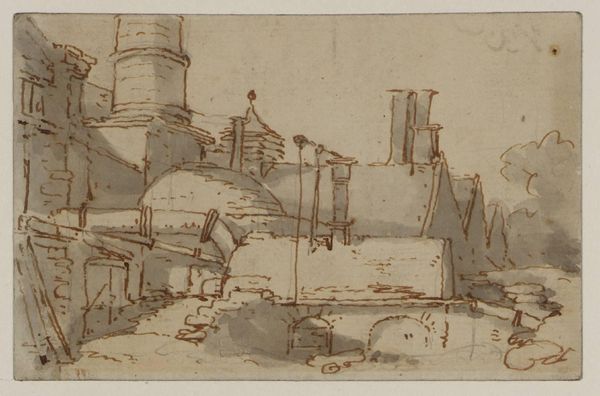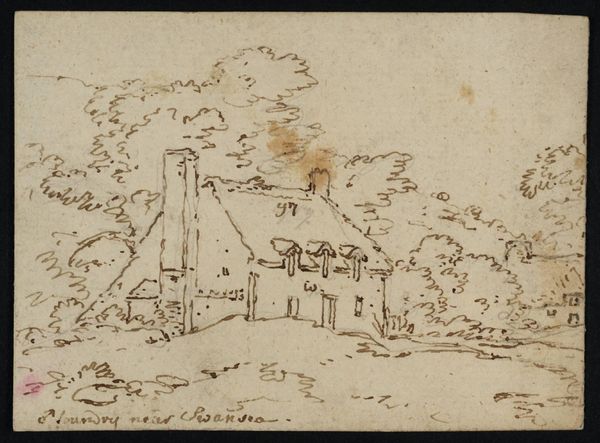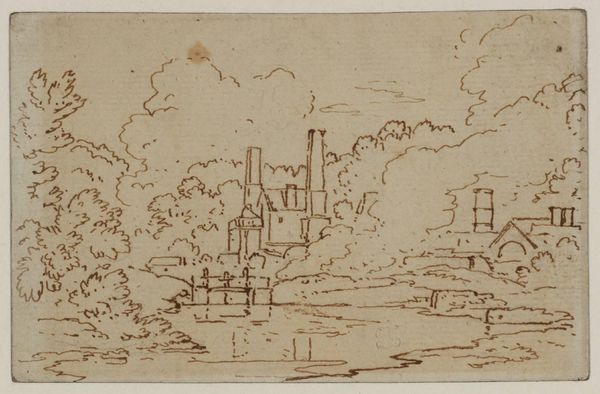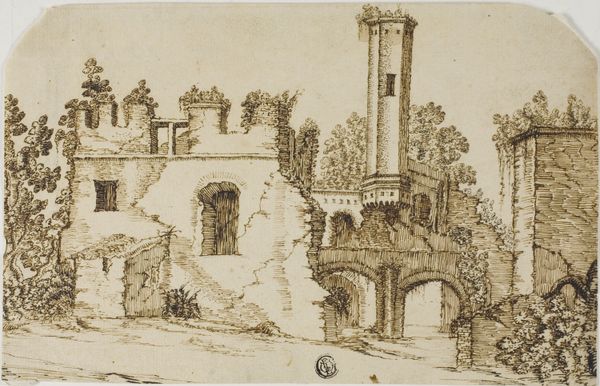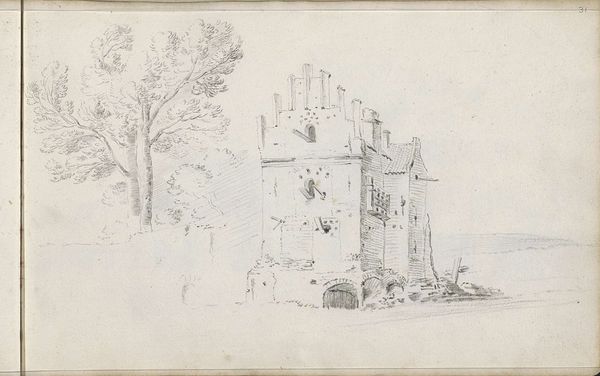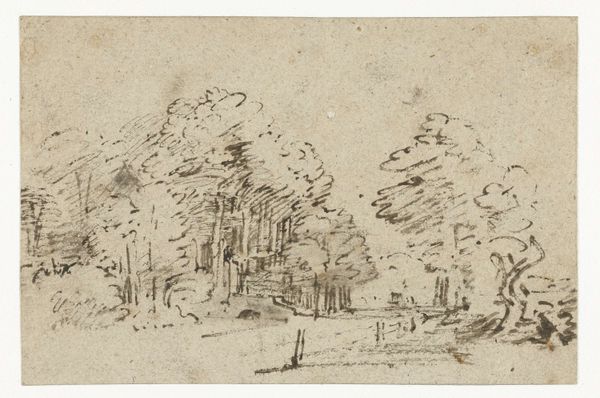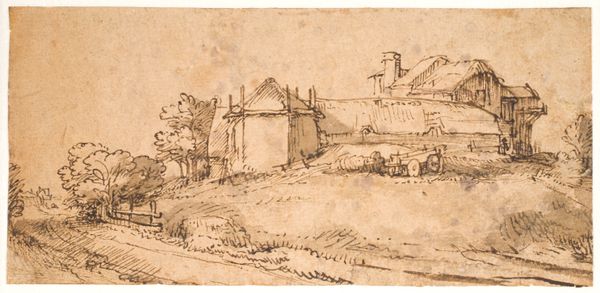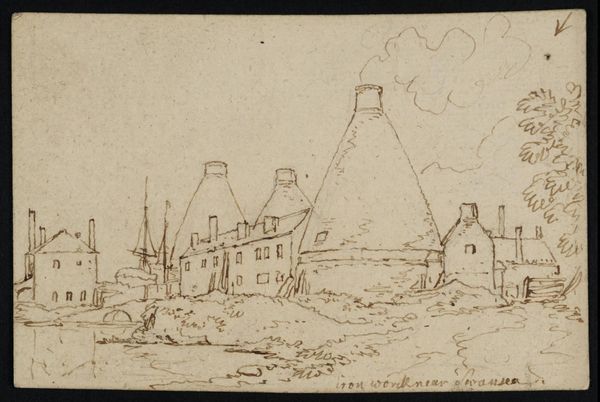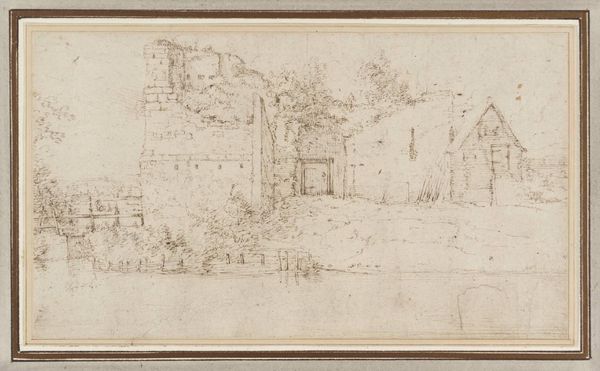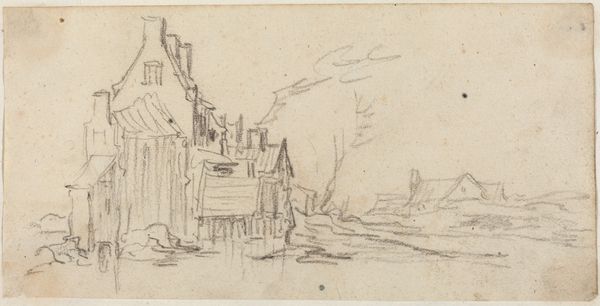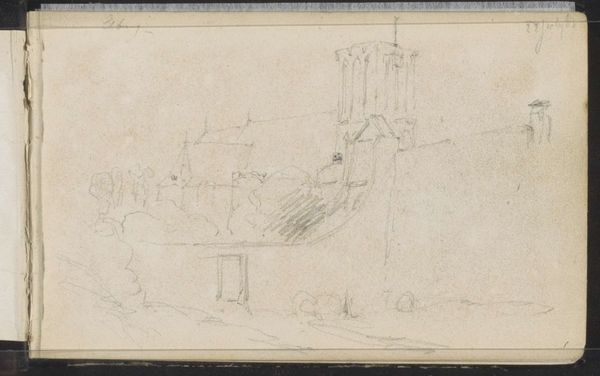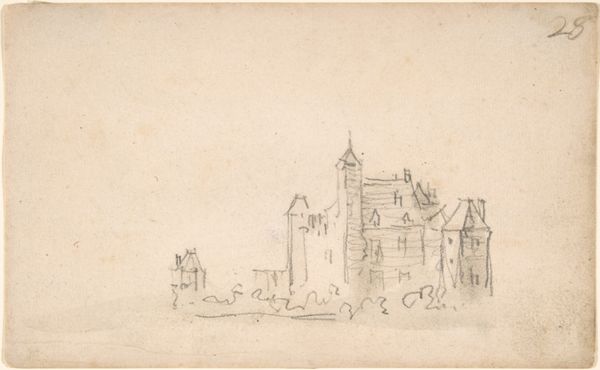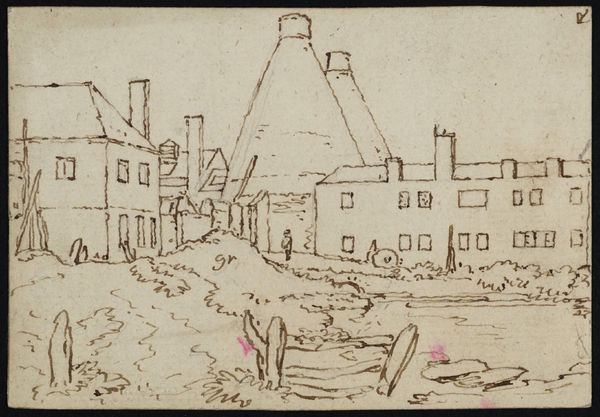
Near View of the Resolution Steam-Engine, Coalbrookdale c. 1786 - 1800
0:00
0:00
Dimensions: support: 80 x 124 mm
Copyright: CC-BY-NC-ND 4.0 DEED, Photo: Tate
Editor: This is Philip James De Loutherbourg’s "Near View of the Resolution Steam-Engine, Coalbrookdale." It's a small, delicate sketch of industry. How does its depiction of the steam engine reflect the social attitudes of the time? Curator: It's interesting to see this industrial subject rendered with such apparent nonchalance, almost as a picturesque landscape. Don't you find it striking how the engine is integrated, seemingly harmoniously, into the natural setting? Editor: Yes, it's as if the artist is trying to naturalize the intrusion of technology. Was there a debate at the time about industrialization's impact? Curator: Absolutely. This image participates in a complex negotiation. It acknowledges industrial progress, but perhaps also subtly domesticates it, presenting it in a way that might be palatable to a society grappling with profound change. Editor: That's fascinating. I hadn't considered the public relations aspect of art at the time. Curator: Indeed. The politics of imagery are always at play, even in seemingly simple sketches.
Comments
tate 7 months ago
⋮
http://www.tate.org.uk/art/artworks/de-loutherbourg-near-view-of-the-resolution-steam-engine-coalbrookdale-d36409
Join the conversation
Join millions of artists and users on Artera today and experience the ultimate creative platform.
tate 7 months ago
⋮
Philip James de Loutherbourg made these drawings at Coalbrookdale in 1786 or 1800. The ‘Resolution’ was a water-returning steam engine designed by the engineers Matthew Boulton and James Watt to power a blast-furnace. It was installed in 1781–2. The boiler house and casting house probably belong to Bedlam Furnace.Turner bought these drawings in 1833 at the estate sale of physician and collector Dr Thomas Monro. Gallery label, October 2022
